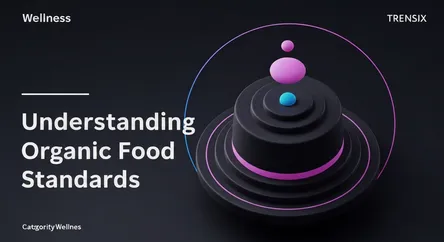Wellness
Understanding Organic Food Standards

A guide to the strict rules behind the organic label and why more people are choosing foods that meet these standards for health and the environment.
What is it?
Organic food standards refer to a rigorous set of government-regulated guidelines for how foods are grown, handled, and processed. In the U.S., the USDA National Organic Program (NOP) sets these standards. To be labeled "organic," products must be produced without synthetic pesticides, fertilizers, genetically modified organisms (GMOs), sewage sludge, or irradiation. For meat and dairy, the standards require that animals are raised with access to the outdoors, fed 100% organic feed, and not given antibiotics or growth hormones. Certification is mandatory and involves inspections to ensure compliance.
Why is it trending?
The trend toward organic food is driven by growing consumer awareness about health, wellness, and environmental sustainability. Many consumers choose organic to reduce their exposure to pesticide residues. Studies suggest organic foods may contain higher levels of certain nutrients and antioxidants. Furthermore, there is an increasing demand for transparency in food production and a desire to support farming practices that are better for the environment. Organic farming is seen as promoting soil health, conserving water, and supporting biodiversity. Ethical concerns, such as the humane treatment of animals, also contribute to its popularity.
How does it affect people?
For consumers, organic standards provide a trusted verification for their food choices, though this often comes at a higher price. The standards mean reduced exposure to synthetic pesticides, which is a significant factor for many, especially pregnant women and children. People may experience health benefits from a diet rich in organic foods, including a potentially lower risk of certain diseases. The standards also impact farmers, who must adhere to strict protocols to gain certification. This can offer a competitive advantage but may also involve higher production costs. Ultimately, these standards empower consumers to make informed decisions that align with their personal health, ethical, and environmental values.